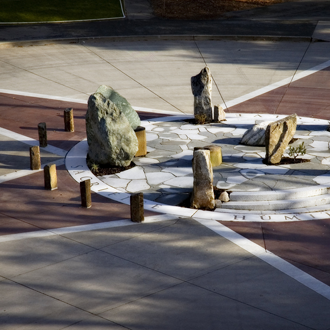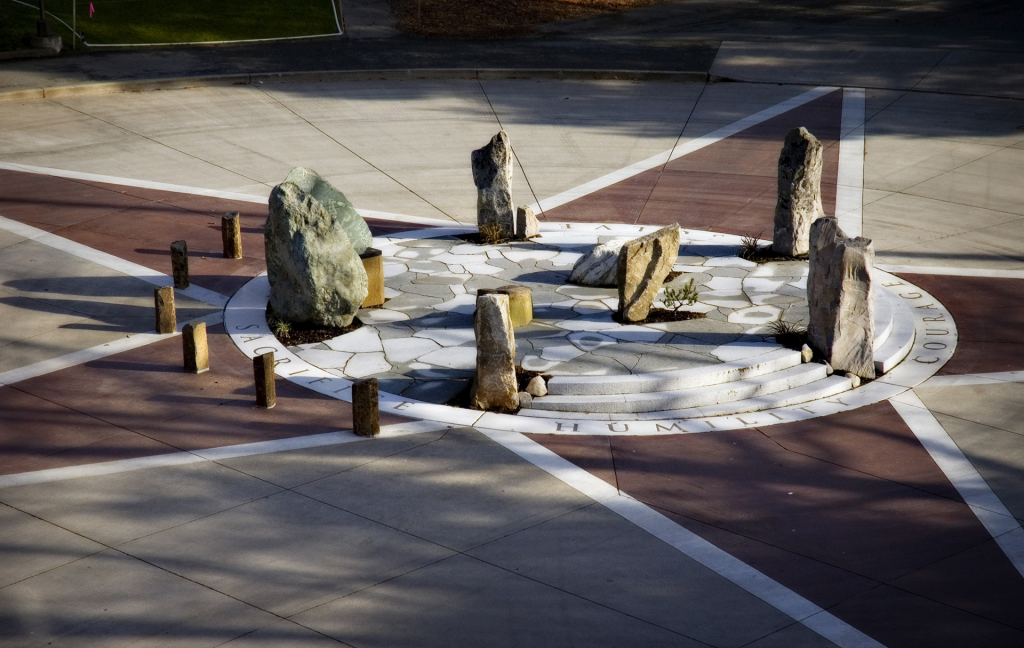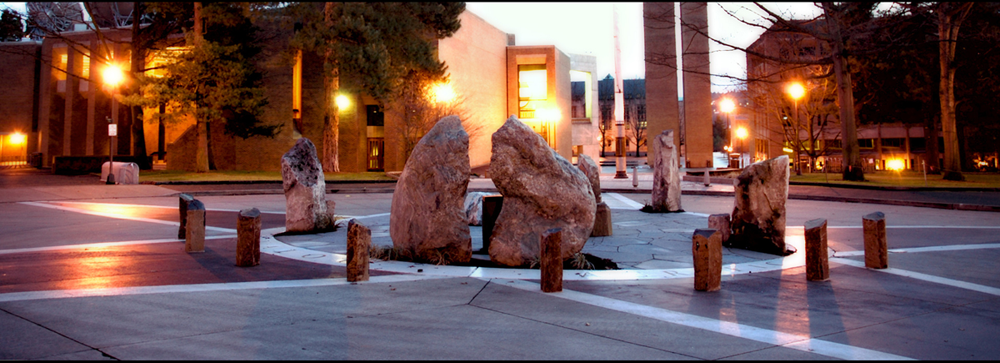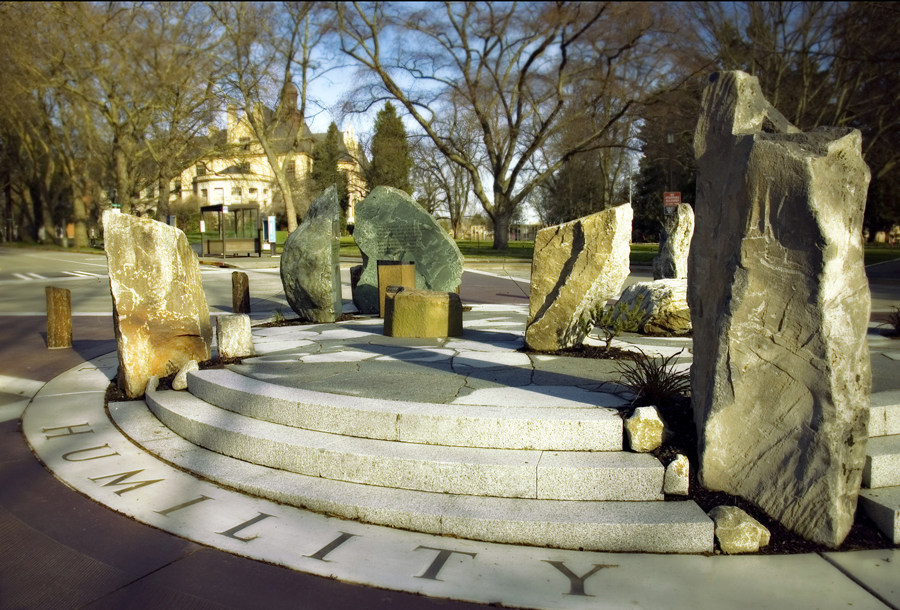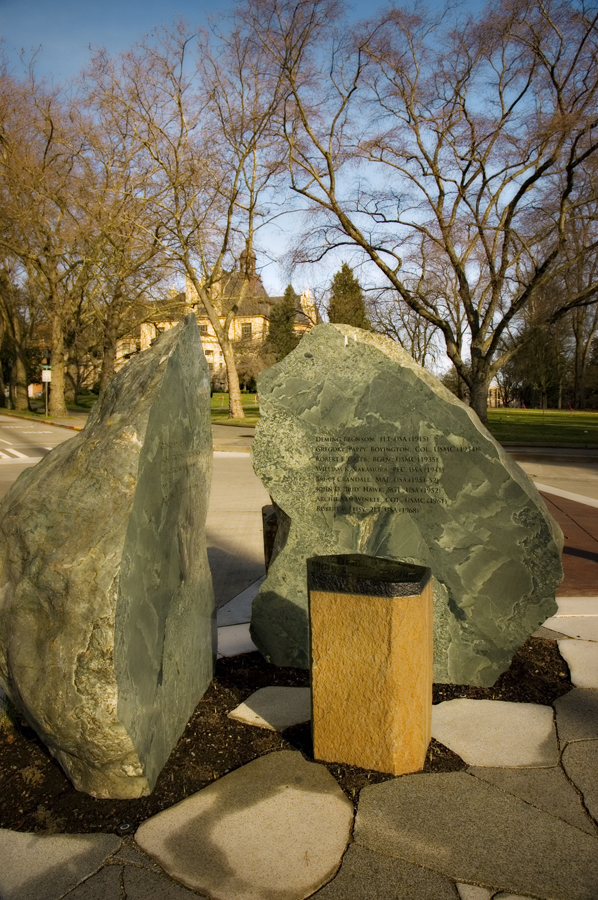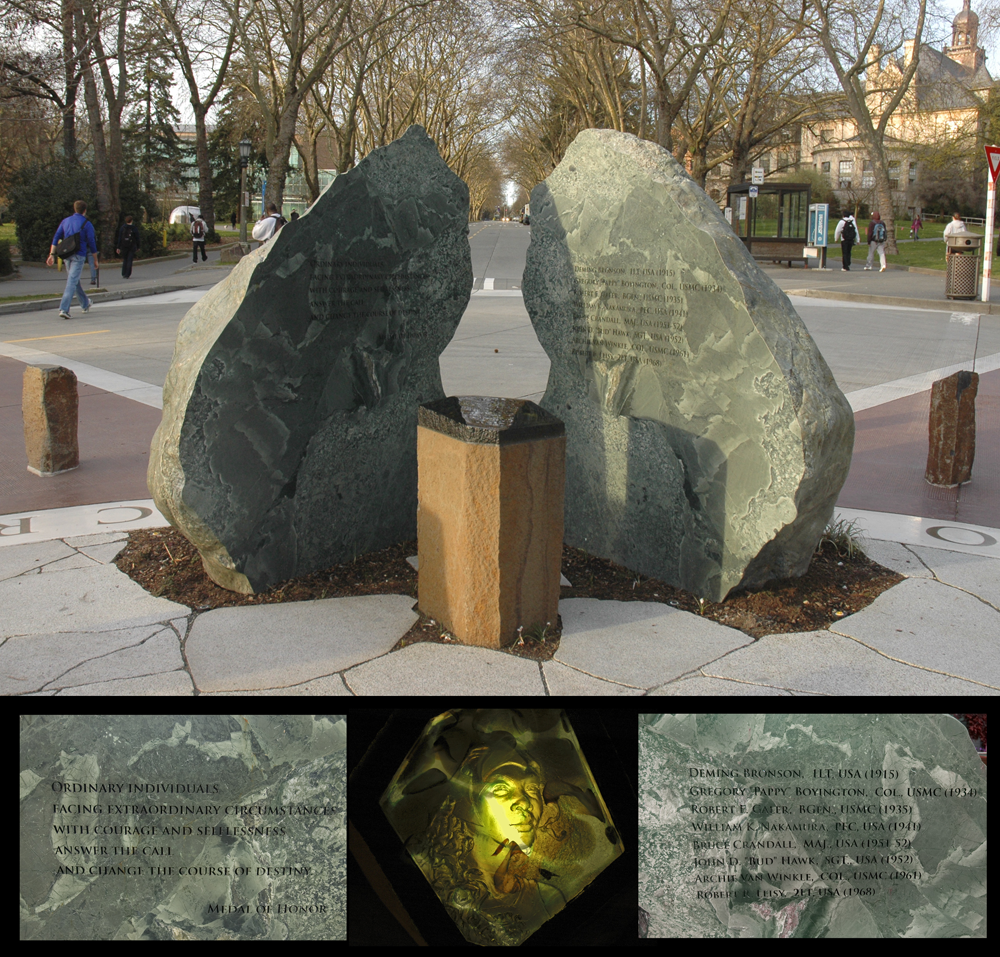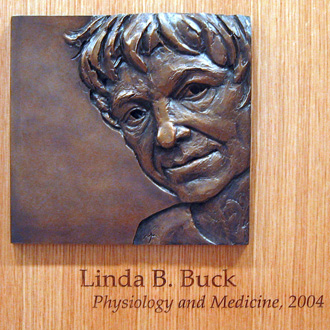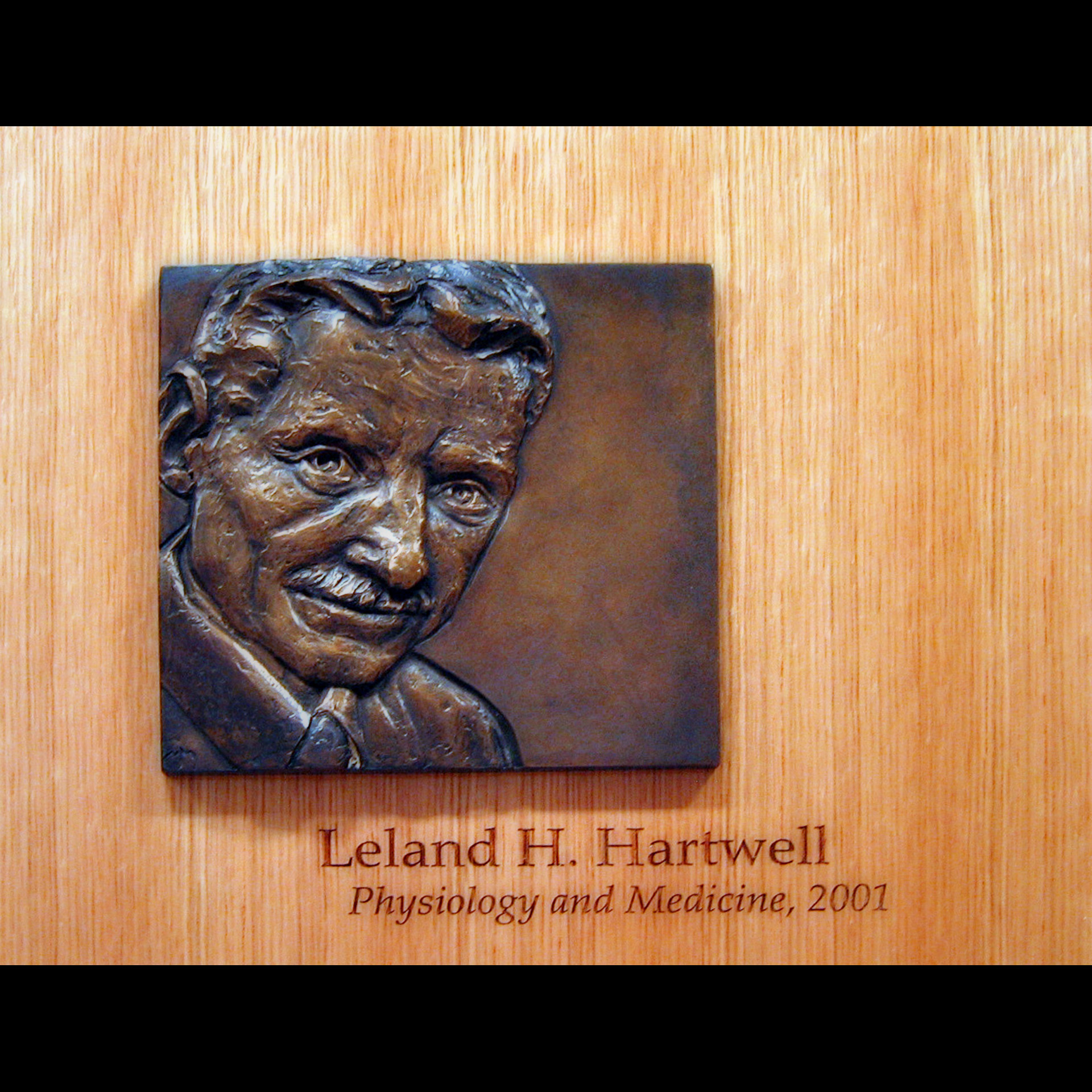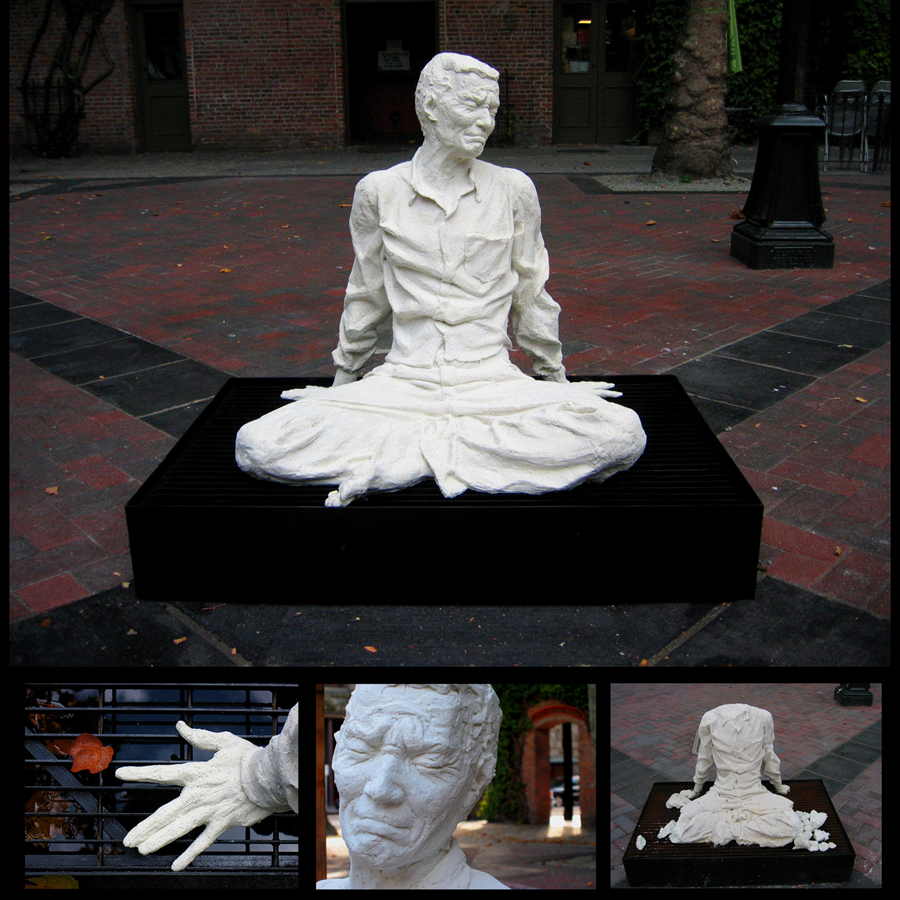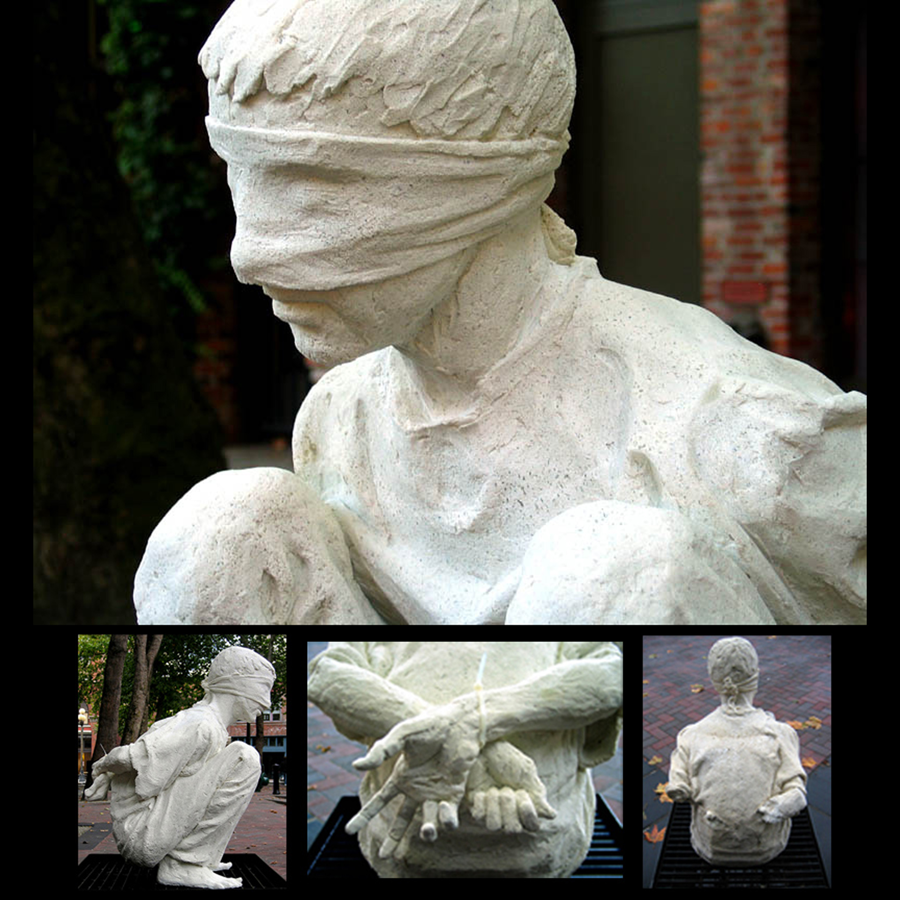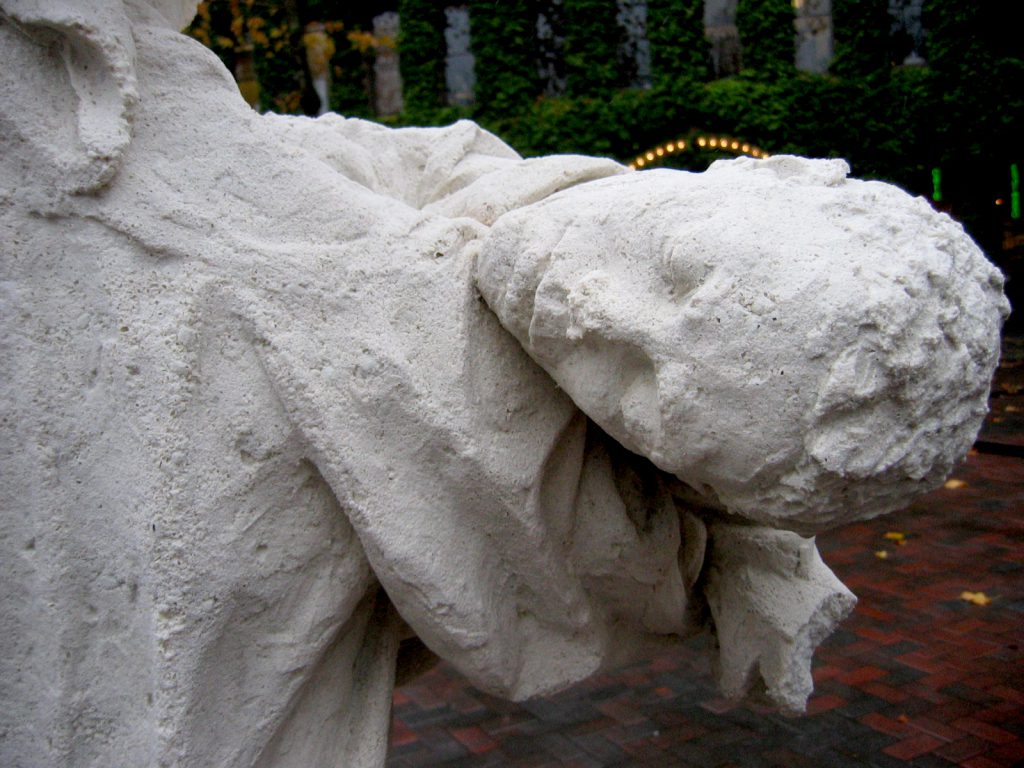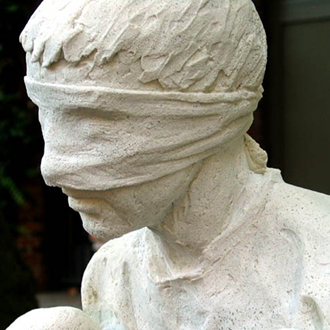The memorial is designed to be the symbolic heart of a busy campus. Its position on Memorial Way is significant not only for its placement alongside the University’s memorials to students and faculty lost in WWI and WWII, but because it creates a sheltering island amidst the sometimes cacophonous and often contradictory pulls of campus life.
It is designed to allow someone to take a moment’s pause amidst the flurry to recognize and confront the tough decisions in life; and find inspiration and affirmation to do what must be done.
I am a representational artist. My work is to create objects and spaces that faithfully depict the subject at hand; to capture and convey these short pivotal moments that have changed so much; to remember and hold them up for the rest of us to regard.
This memorial captures and honors the actions performed by these men, whose actions represent the questions and challenges we all will face at some time in our lives. These moments of extreme challenge when our lives, our futures, and the very fate of our cause lay in the balance. These moments are etched in our hearts. They are the stories we hope to pass to our children and the ages in bronze, in glass, and in stone.
I hope this memorial is a sanctuary, inviting people to come in and pause and be inspired by the example of these individuals and gather the courage and resolve to be in touch with something greater than oneself.

